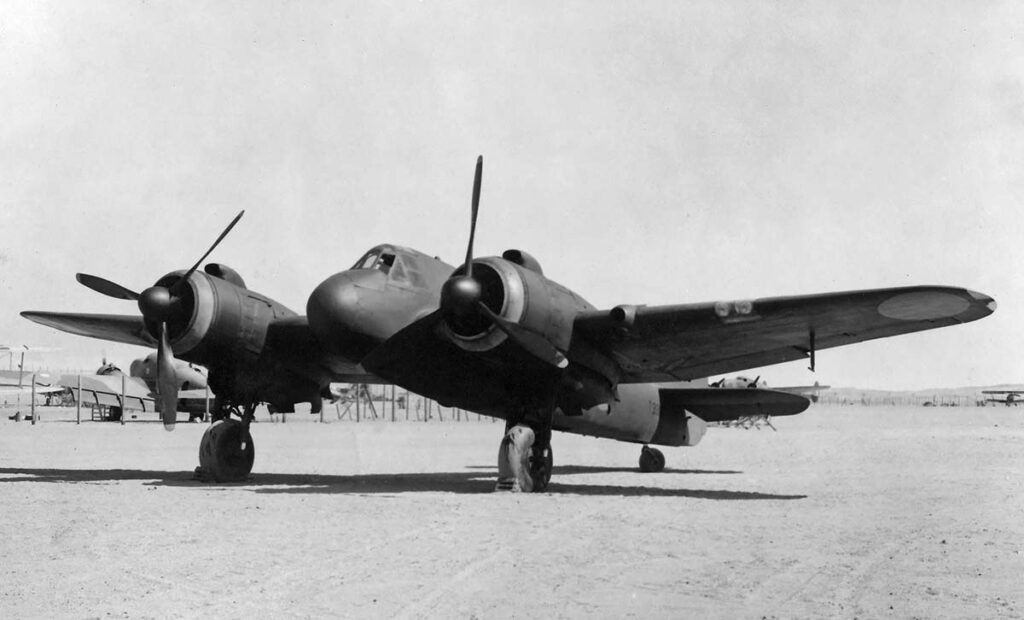The Bristol Beaufighter, a WWII British heavy fighter, was renowned for its versatility, heavy armament, and role as a night fighter and ground-attack aircraft.
The Bristol Beaufighter was a multi-role aircraft that served as one of the RAF’s primary fighters during World War II. Known for its heavy armament and versatility, the Beaufighter excelled in roles such as night fighting and ground attack. This article explores the development, design, operational capabilities, and combat history of the Beaufighter.
History of the Development of the Bristol Beaufighter
In the late 1930s, with the looming threat of war, the RAF identified the need for a versatile, heavily-armed fighter. The Bristol Aeroplane Company initiated the development of the Beaufighter in response to this need, under the leadership of designer Leslie Frise.
The objective was to create a robust, multi-role fighter capable of fulfilling both day and night operations. Utilizing components from the earlier Bristol Blenheim, the Beaufighter was developed quickly and efficiently. Its first flight took place on July 17, 1939.
The Beaufighter was developed during a critical period in aviation history, characterized by rapid advancements and the pressing need for effective combat aircraft.
Design of the Bristol Beaufighter
The Beaufighter’s design was notable for its time. It was powered by two Bristol Hercules radial engines, providing a balance of power and reliability. The aircraft had a length of 12.7 meters and a wingspan of 17.6 meters.
Its design included a robust fuselage capable of carrying heavy armaments, including cannons and machine guns. The Beaufighter was also one of the first aircraft to be equipped with radar for night-fighting missions.
The main drawbacks of the design were its relatively large size and heavy weight, which affected maneuverability. However, its firepower and ability to withstand damage made it a formidable aircraft in various roles.

Performance of the Bristol Beaufighter
In terms of performance, the Beaufighter was effective and versatile. It could reach a top speed of about 515 km/h (320 mph) and had a service ceiling of 5,600 meters (18,373 feet). Its range was approximately 2,370 kilometers (1,473 miles), enabling it to undertake a variety of mission profiles.
Compared to contemporaries like the German Messerschmitt Bf 110, the Beaufighter was more heavily armed and versatile, though less agile. Its adaptability made it effective in roles ranging from anti-shipping strikes to ground attacks.
Military Use and Combat of the Bristol Beaufighter
The Beaufighter was armed with an array of cannons and machine guns, and later models could carry rockets and bombs. It saw extensive use in WWII, particularly as a night fighter and in anti-shipping roles.
The aircraft played a significant role in the Battle of the Atlantic, the Mediterranean, and the Pacific theaters. Its ability to carry out precision strikes against enemy shipping and ground targets made it a valuable asset.
The Beaufighter was used by several Allied nations during the war. Post-WWII, its role was taken over by more advanced aircraft, leading to its gradual retirement from active service.
The Bristol Beaufighter remains a significant example of British aviation engineering during World War II. Its development, robust design, and versatility in combat roles exemplify the innovation and adaptability required during the war. The legacy of the Beaufighter is marked by its substantial contribution to Allied efforts in various theaters, solidifying its status as one of the most effective multi-role combat aircraft of its time.
Back to the Special Aircraft section.